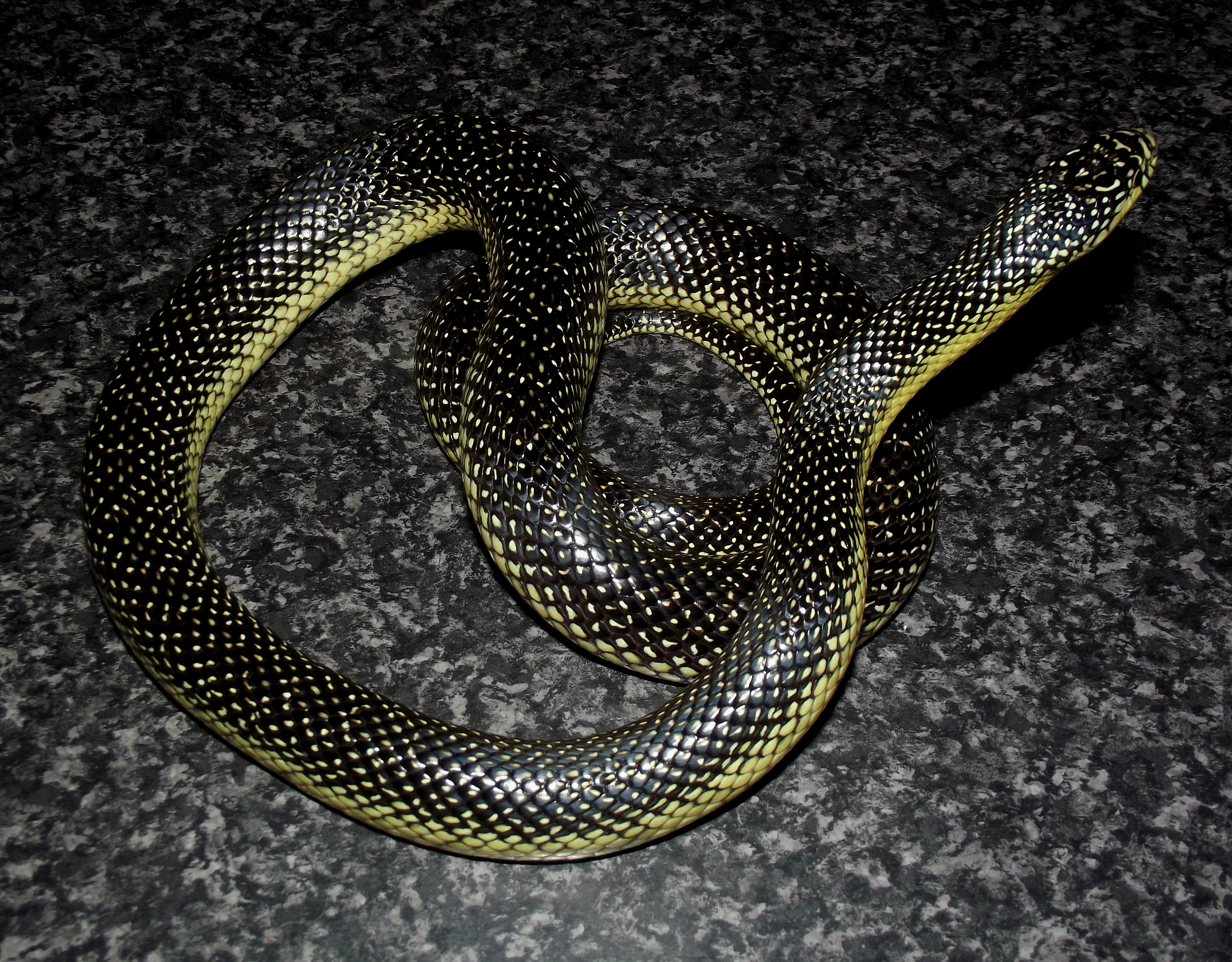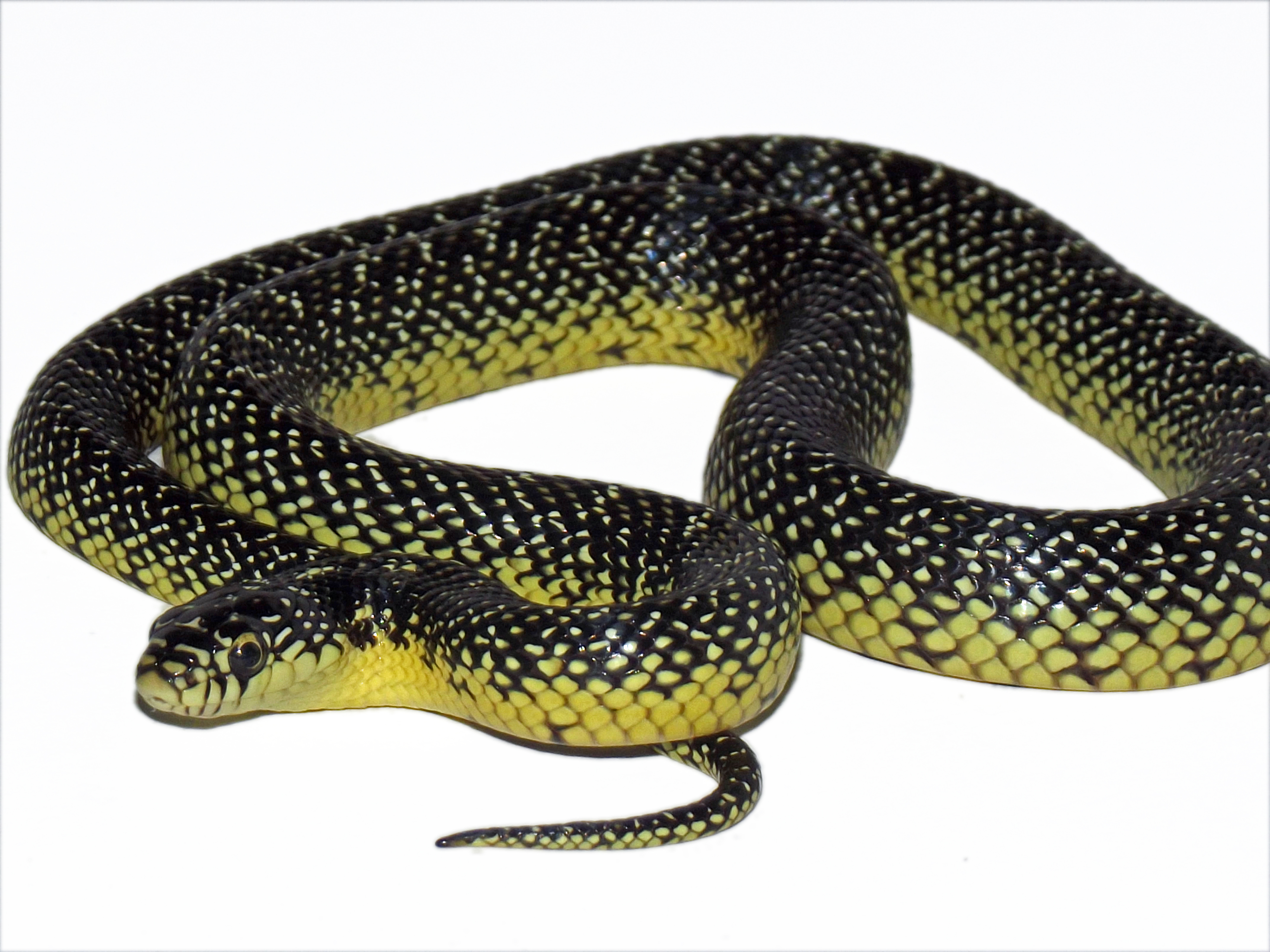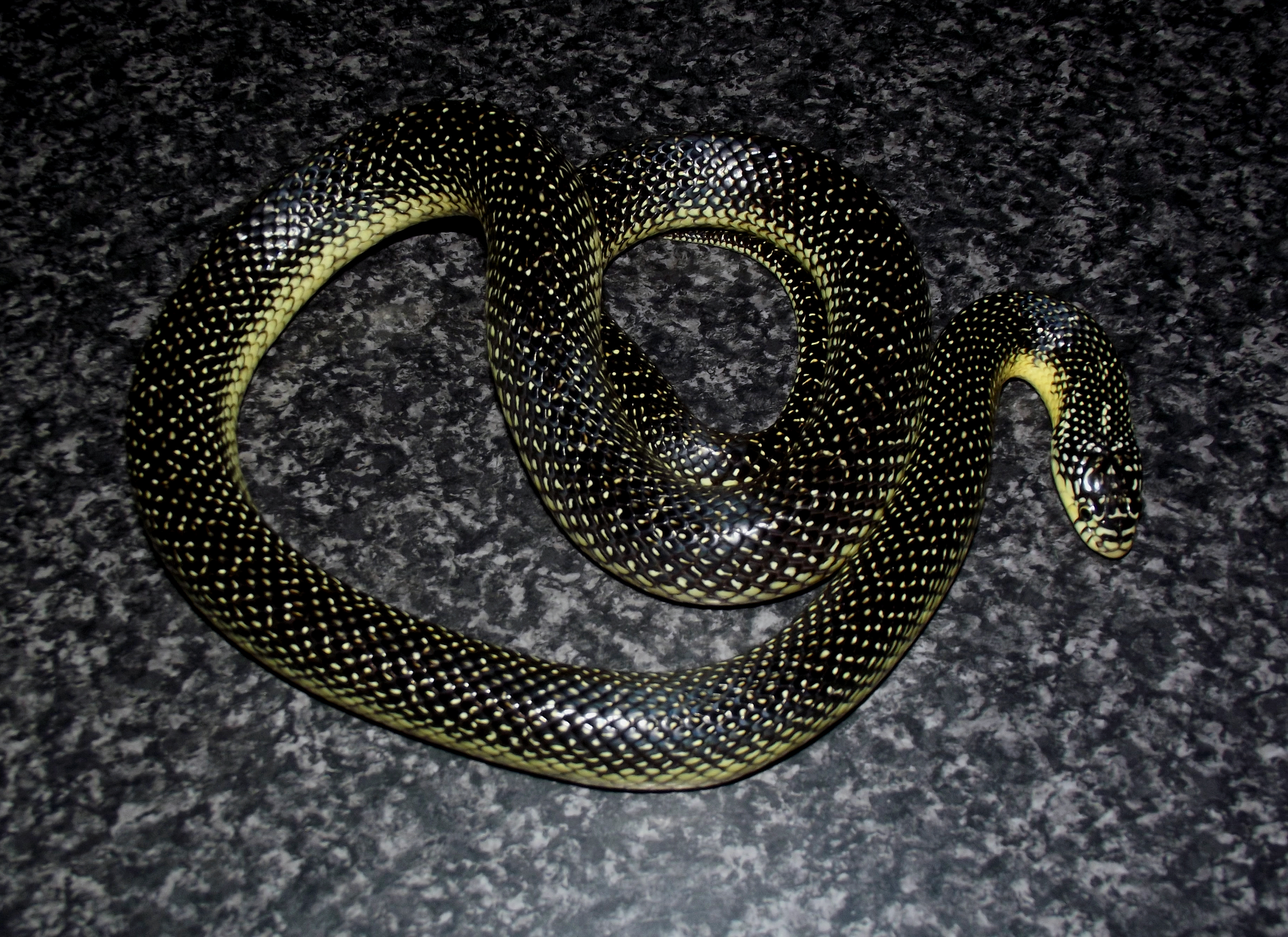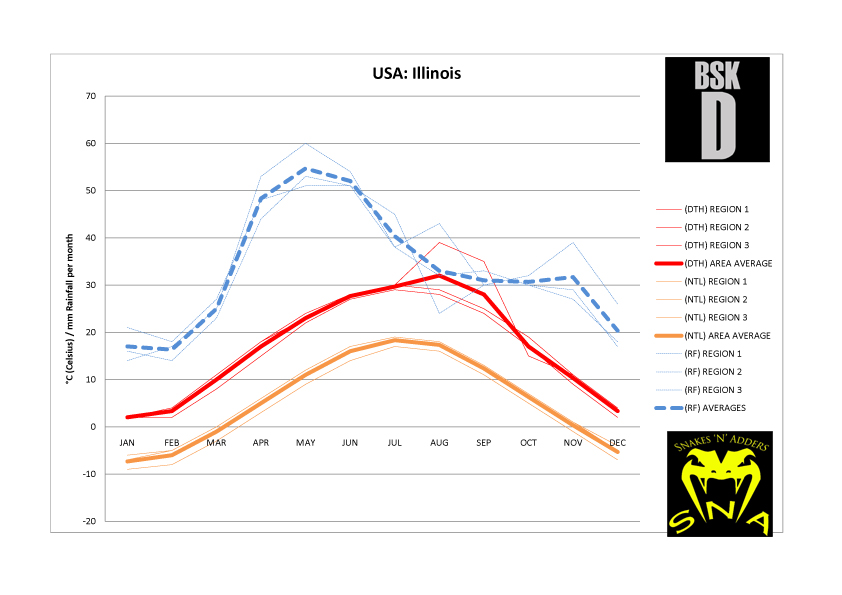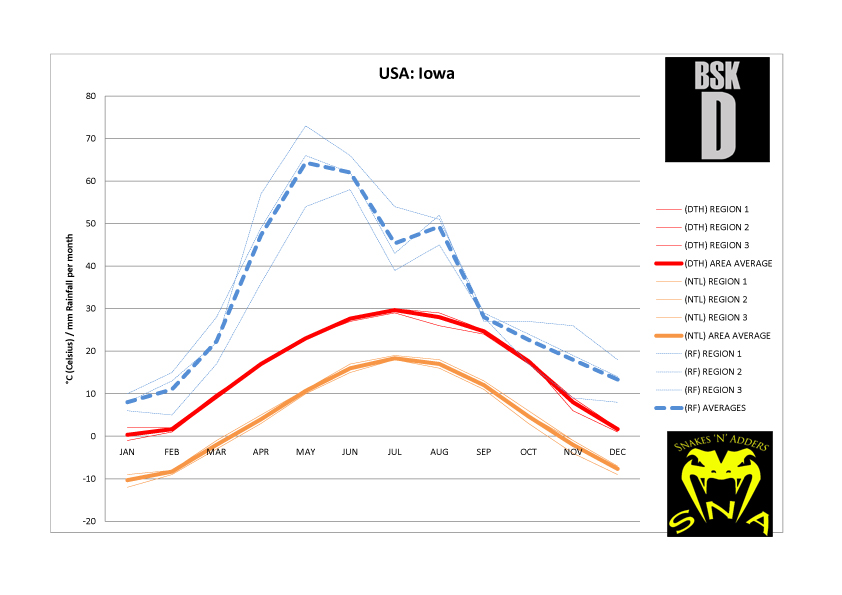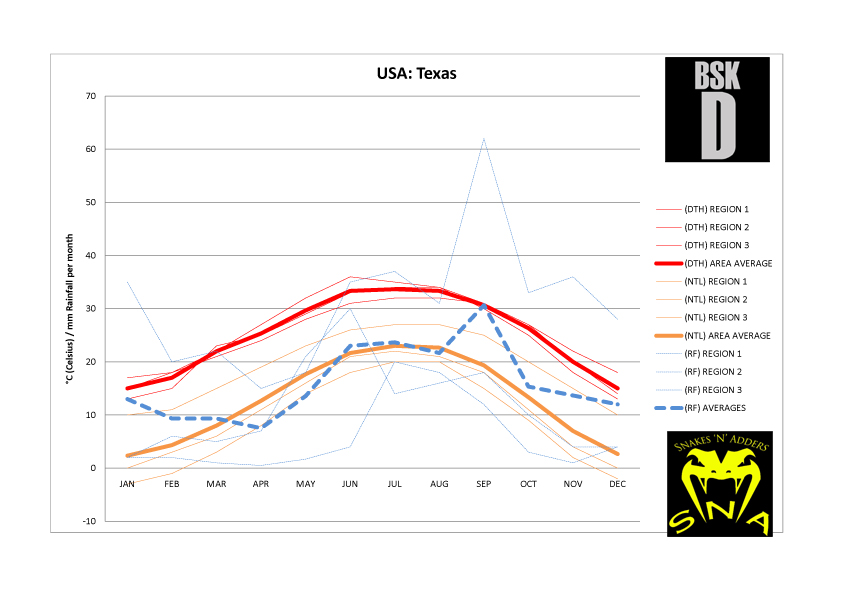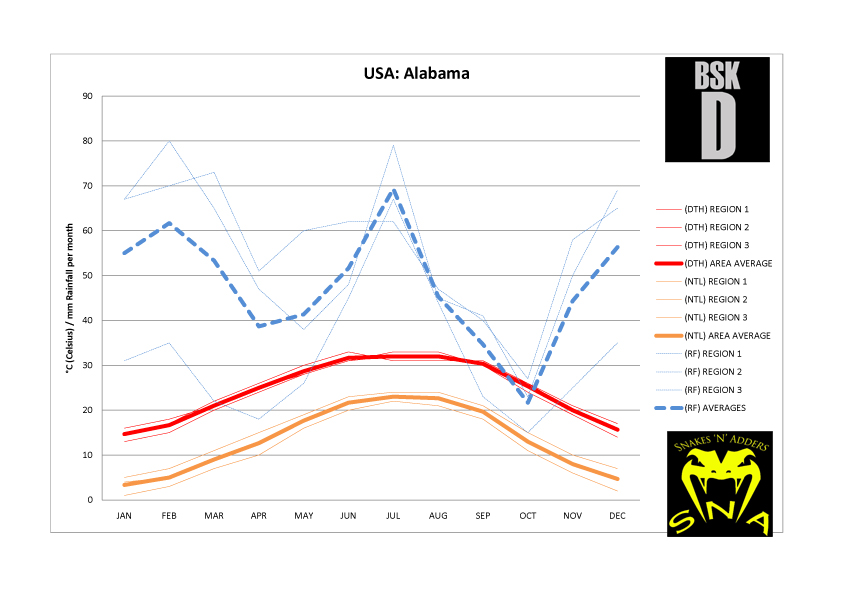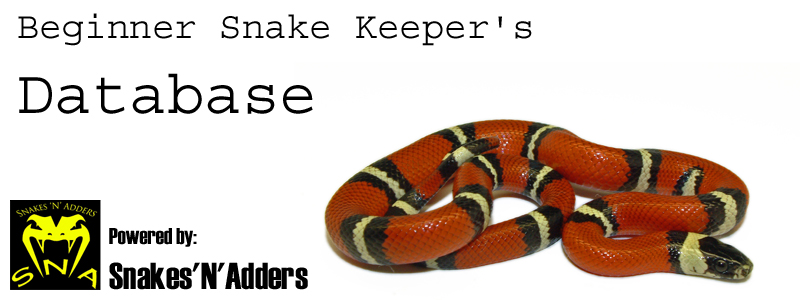.jpg)
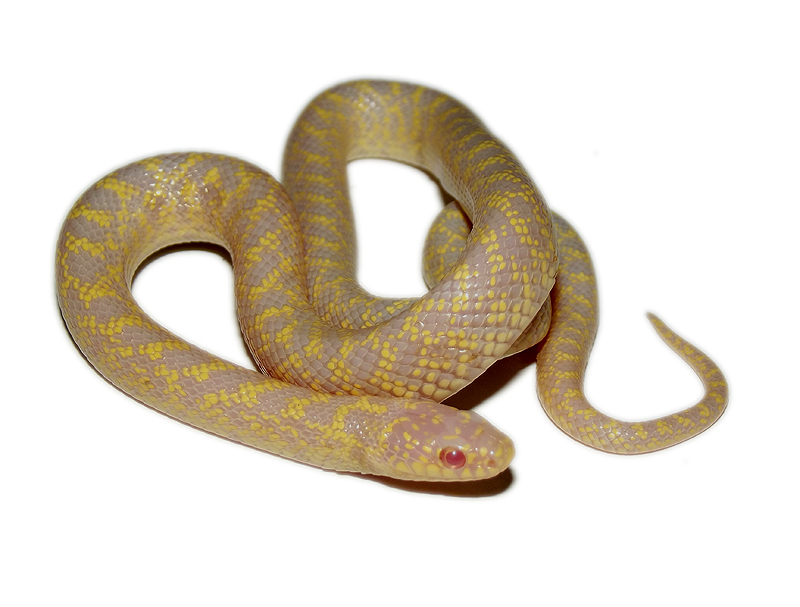
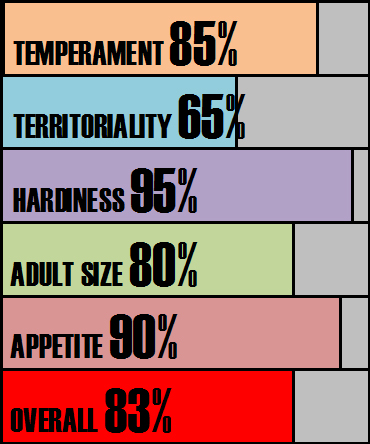

Species Notes based on experiences:
Speckled King Snakes are arguably the prettiest of the ‘getula’ complex. The only other subspecies that holds a candle to it for beauty is its neighbour the Desert King Snake. The most sought after of the Speckled King Snakes are the ones which originate from the delta region west of the Mississippi. These examples have an even circular yellow dot to the centre of each scale. They are breathtaking. This species is heavily influenced by the neighbouring subspecies and this affects the way the yellow dots manifest into maturity. Certain regions may retain some semblance of the saddling they are born with. Irrespective of locale this snake is seriously pretty. Strangely considering this beauty they are one of the less commonly seen subspecies. In fact there are only Chain Kings and Eastern Black Kings that are rarer in UK collections. This hobby is hard to understand at times, why this species was passed over in favour of ‘morph’ Californian and Florida King Snakes or indeed Corn Snakes and not even King Snakes at all is beyond us. They simply blow nigh on all other North American species out of the water for sheer beauty.
Score analysis:
Baby Speckled King Snakes can be nervous in the hand. They rattle their tail readily and it is very common to be defecated upon through fear. This is normal for a lot of baby King Snakes though so should not be considered out of the ordinary. Most of the time Speckled King Snakes grow up to be an absolute pleasure to work with becoming tame and inquisitive snakes. On the whole we have found that the Speckled and Desert King Snakes are of more even temperament than the coastal varieties. If worked with regularly this can become one of the tamest of the ‘getula’ group.
The occasionally nervous nature of the young can make them highly defensive in the enclosure. Flattening of the head, hissing, mock strikes, tail rattling and the use of the musk gland can waving of the tail are all pretty much standard procedure. This accounts for why the territoriality score is so much lower than the temperament score. Usually once removed from the enclosure compliance is quick to follow. These episodes with youngsters are fleeting and the keep just has to persevere to get to the compliance stage.
Northern regions of the range are harsh and winters will see the species brumate for a period of the year. As with the rest of the ‘getula’ snakes Speckled King snakes have proven to be hardy and easy going snakes.
Maximum record length is 6ft (180cm). The average length usually falls well short of this but would still be in excess of 90cm. The adult size score has then been modified accordingly. A score of 80% may have been a little harsh but it was with maximum size in mind. Most examples will remain within the sweet spot we have dictated for size and maximum score. If we were to raise the adult size score to 100%, The overall score would then increase to 87% making it one of the highest scoring species on the website.
King Snakes, particularly the North American King Snakes are eating machines. The Speckled King Snake is just a little bit shy, particularly as babies. Once they are established and growing they default into being regular feeders that avidly attack their food. However the occasional messing around that may be required to get the babies going has seen them lose 10% on the scores.
Enclosure recommendations:
Tub:
50 ltr, but very large specimens may make this style inappropriate
Vivarium:
120cm x 45cm x 45cm
Budget rig: -
40cm x 30cm heat pad
On / off thermostat
Digital thermometer to monitor thermostat performance
Warm hide
Cool hide
Water bowl
substrate
Recommended rig (vivarium only): -
250w ceramic heat emitter
Ceramic lamp holder and bracket
Bulb guard
Day night thermostat
Digital thermometer to monitor thermostat performance
Various logs and caves along the thermal gradient
Damp hide
Climbing and exercise branches
Plants and foliage (live or artificial – your choice)
Water bowl
Substrate
UVB light (8w T5 shade dweller 7% kit from Arcadia or equivalent) (optional)
Subterranean section to vivarium for further psychological security (optional)
Climate analysis:
Northern Parts of the range in Illinois and Iowa have harsh winters. Winter night time low averages approach and may even exceed -10°c. By comparison to the other subspecies this potentially is actually harshest temperature set seen. One possibility for why more Speckled Kings are not seen in the UK is they may require more in the way of brumation to provoke copulation. This however is hypothetical. It could also just be that we have no taste and decided to breed the less attractive subspecies.
Conclusion:
A missed opportunity on the part of the UK hobby as a whole. We have not capitalised whilst these animals were available leading to a shortage now. We are unclear on the US laws pertaining to their shipment to the UK but it is unlikely there would be the demand to do so. It is a real shame as this is a spectacular King Snake, their slightly more delicate build and smaller size on average coupled with their temperament which is one of the best in the group makes it a bit of a tragedy. Hopefully more animals can be produced to bolster numbers that still circulate around the hobby. These are rarely pairs and the hap hazard nature in which they are encountered suggests there are very few people working with breeding pairs.
